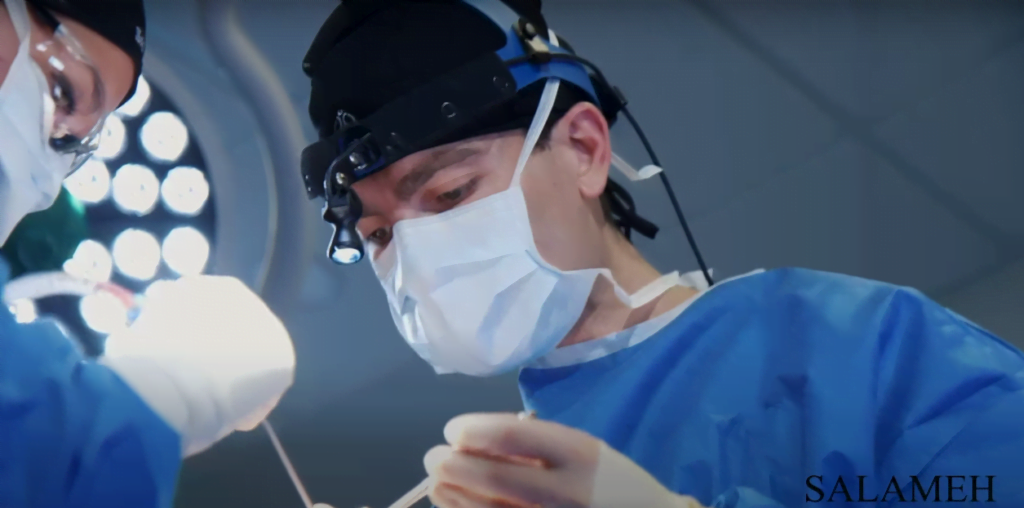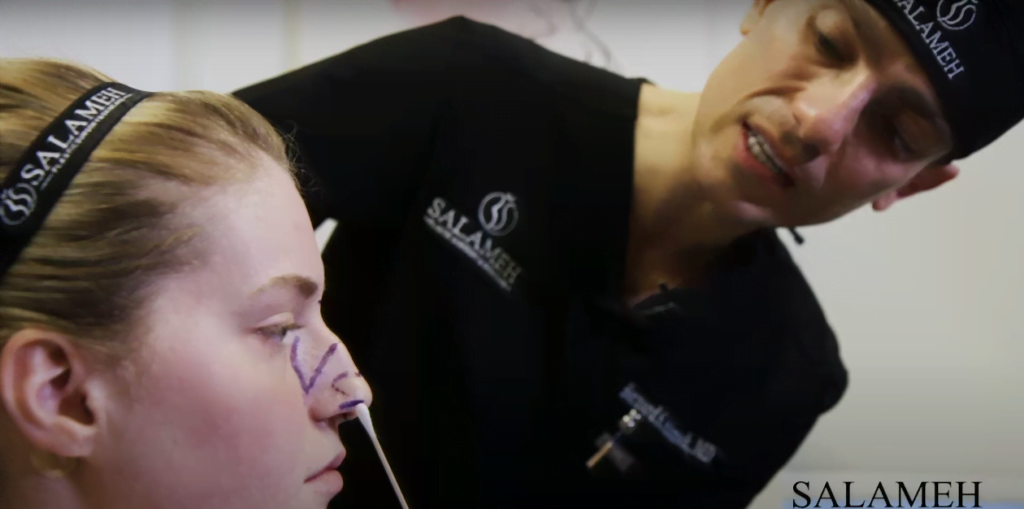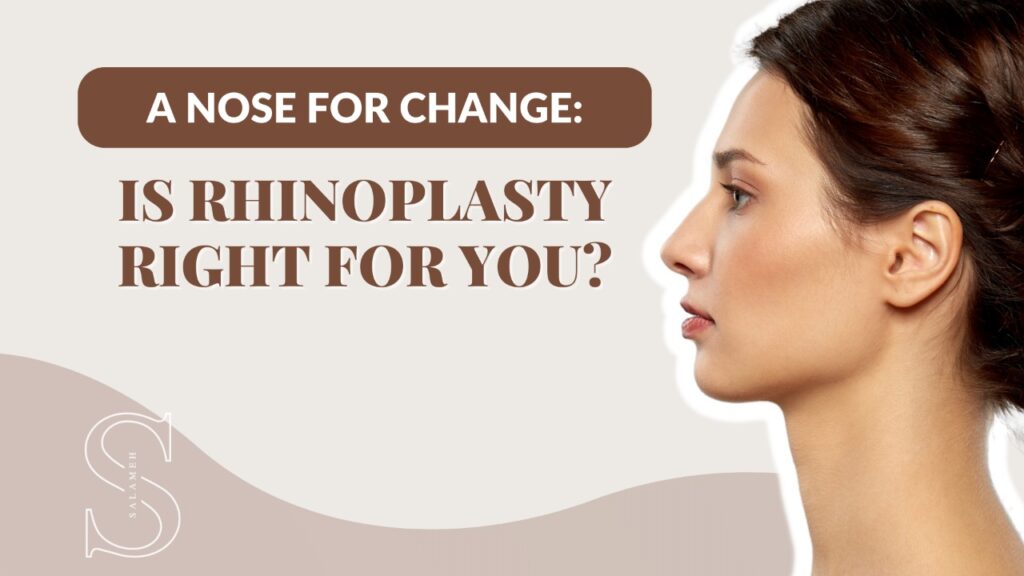Rhinoplasty, commonly known as “nose job,” is a surgical procedure that alters the shape and size of the nose.
According to the American Society of Plastic Surgeons (ASPS), rhinoplasty is one of the most sought-after cosmetic procedures, with over 200,000 rhinoplasty surgeries performed in the United States alone.
Rhinoplasty is a common procedure for both men and women, with most patients in their 20s and 30s. The ASPS data also shows that rhinoplasty is more prevalent among certain racial and ethnic groups, with higher rates among Hispanic, Asian, and Middle Eastern patients.
While rhinoplasty can effectively improve the appearance of the face and boost self-confidence, it is essential to carefully consider all factors before making a decision.
In the hope that you are fully informed before undergoing the procedure, in this post, we will cover crucial topics for you to have a deeper understanding of the surgery. This includes the surgical process, medical benefits, potential risks and complications, finding the right surgeon, and what to expect after the surgery.
Reasons for Getting a Nose Job

Before deciding to undergo rhinoplasty, evaluating your motivations carefully is essential. It may be for aesthetic reasons or to cure a medical condition.
Indeed, rhinoplasty is usually performed for cosmetic reasons. But, it can also have significant medical benefits, depending on the individual’s specific circumstances.
How much does a Rhinoplasty cost?
In the United States, the average cost of rhinoplasty ranges from $5,000 to $15,000. However, prices can range from as low as $3,000 to as high as $20,000 or more.
Some potential medical benefits of rhinoplasty surgery include the following:
- Improved breathing: If the shape of the nose is causing difficulty breathing, rhinoplasty can help to correct this issue. The procedure can remove any obstructions or abnormalities in the nasal passages causing breathing problems.
- Correction of congenital disabilities: Some people are born with abnormalities in the shape or structure of their noses that can cause functional or cosmetic issues. Rhinoplasty can be an avenue to correct these defects and improve the appearance and function of the nose.
- Relief from sinus problems: Rhinoplasty can also address sinus problems, such as chronic sinusitis or nasal polyps. Correcting these problems can be achieved by addressing any structural abnormalities in the nose that may contribute to the issue.
- If you are choosing rhinoplasty for purely aesthetic reasons, it is essential to have realistic expectations about the outcome of the surgery and to understand that it may not completely change your appearance or solve underlying emotional or psychological issues.
Whatever your motivation is, it can be helpful to discuss your decision with a trusted friend or family member, as they can provide an outside perspective and help you consider all aspects of the procedure.
What Happens During Rhinoplasty

Another thing to consider before undergoing the procedure is to have an overview of what happens during the actual surgery.
While rhinoplasty is not typically considered a major operation, it is still a significant procedure that requires careful consideration and preparation.
Rhinoplasty can be performed using either general anesthesia (where the patient is put to sleep) or local anesthesia (where the patient is awake but the area being operated on is numb).
The surgery usually takes several hours to complete and is performed on an outpatient basis, meaning the patient does not need to stay in a hospital overnight.
During the surgical process, an incision is made inside the nostrils or the columella (the area between the nostrils). The skin is then separated from the underlying bone and cartilage, and the necessary adjustments are made to reshape the nose. Then, the skin is draped over the newly shaped nose, and the incisions are closed.
The recovery time can vary, but it is common to experience swelling, bruising, and discomfort for several weeks after the operation. Proper aftercare, including following the surgeon’s instructions and attending follow-up appointments, is vital to ensure the best possible outcome.
Avoiding Possible Risks and Complications
Rhinoplasty is generally a safe procedure, but like any surgery, some potential risks and complications can occur. Some of the possible risks and complications of rhinoplasty include the following:
- Anesthesia risks: All surgery carries risks associated with the use of anesthesia. These can include allergic reactions, breathing problems, and other complications. However, this is highly manageable.
- Infection: There is a small risk of infection after any surgery.
- Bleeding: There is a risk of bleeding during or after the surgery.
- Scarring: Minimal scarring may occur after rhinoplasty, although this is usually minimal and hidden within the nostrils.
- Changes in sensation: The nerves in the nose may be altered during the surgery, leading to changes in sensation or numbness in the area.
- Breathing problems: In rare cases, rhinoplasty can cause breathing problems, although this is more likely to occur in people who have had previous nasal surgery.
- Unsatisfactory results: It is essential to have realistic expectations about rhinoplasty results. In some cases, the final result may differ from what was desired, and a second surgery may be necessary to achieve the desired outcome.
In minimizing the risks and complications, it is crucial to choose a qualified and experienced surgeon trained in performing this procedure. You should also carefully follow your surgeon’s pre-and post-operative instructions and promptly report any concerns or problems to your surgeon.
Finding the Best Surgeon for Rhinoplasty Surgery in Kentucky and Indiana

Finding a qualified surgeon is one of the most critical steps to consider in undergoing rhinoplasty.
It is vital to research the surgeon’s qualifications, including their training, certification, and experience in performing the procedure.
Asking for before and after photos of past patients can also give you a better understanding of the surgeon’s skills and the results you can expect.
Scheduling a consultation with the surgeon can also allow you to ask questions and discuss your goals for the procedure in detail.
Making a Fully-Informed Decision
After thoroughly evaluating your motivations, understanding the procedure, and finding a qualified surgeon, it is essential to weigh rhinoplasty’s potential benefits and drawbacks.
Again, it can be helpful to seek an opinion from a qualified surgeon to get a more well-rounded perspective on the procedure.
Let us assist you!
At Salameh Plastic Surgery Center, we understand that the decision to undergo rhinoplasty is significant and personal. We are committed to providing our patients with the highest care and expertise.
Our double-board-certified plastic surgeons, Dr. Salameh and Dr. Saba, among the best rhinoplasty surgeons, have extensive training and experience in rhinoplasty and other facial procedures. Our team will take the time to listen to your concerns and goals and work with you to create a personalized treatment plan.
We are proud to offer our state-of-the-art facilities and compassionate staff to ensure your comfort and safety throughout the process.
If you are considering rhinoplasty, we invite you to schedule a FREE consultation with us, and we’ll be glad to attend to all your questions about the procedure.
Together, we can help you achieve the beautiful, natural-looking results you desire. You may book your free consultation here: https://salamehplasticsurgery.com/contact-us/.
Takeaway
In conclusion, it is essential to consider all factors carefully before undergoing rhinoplasty. Understand the procedure, evaluate your motivations, and find a qualified surgeon. Remember to thoroughly research and choose a skilled surgeon to ensure the best possible outcome.
To see some of the rhinoplasty before-and-after photos done by our surgeons, you may see them here: https://salamehplasticsurgery.com/procedures/face-procedures/rhinoplasty/.

